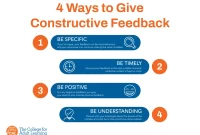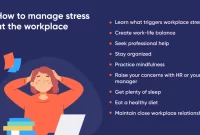Time Management for multitasking employees is crucial in today’s fast-paced work environment. This article will provide essential tips and strategies to help individuals effectively prioritize tasks, improve productivity, and find a healthy work-life balance.
Prioritizing Tasks Efficiently
Time management is crucial for multitasking employees in order to achieve high productivity and meet deadlines effectively. By prioritizing tasks efficiently, individuals can maximize their output and avoid feeling overwhelmed. Here are some strategies to help employees manage their time more effectively:
Create a To-Do List
Start each day by creating a to-do list. This enables you to have a clear overview of the tasks that need to be completed and prioritize them accordingly. Breaking down larger tasks into smaller, more manageable ones can also make them less daunting.
Identify Urgent and Important Tasks
Differentiate between tasks that are urgent and tasks that are important. Urgent tasks have imminent deadlines or require immediate attention, while important tasks contribute to long-term goals or have significant impact. Focus on completing urgent and important tasks first.
Eliminate or Delegate Non-Essential Tasks
Identify tasks that are not essential to your role or that can be easily delegated to others. By eliminating these tasks or delegating them to colleagues, you can free up your time to concentrate on more crucial responsibilities.
Utilize Time-Blocking Techniques
Allocate specific blocks of time for different tasks or categories of work. This helps establish a structured schedule and prevents distractions. Avoid multitasking within each block as it can decrease productivity. Instead, focus on completing one task before moving on to the next.
Take Regular Breaks
Allow yourself short breaks in between tasks to recharge your energy and maintain focus. Taking breaks can actually enhance productivity as it prevents mental fatigue and keeps you motivated throughout the day.
Learn to Say No
It’s important to recognize your own limitations and prioritize your workload accordingly. If your plate is already full and additional tasks will overload you, learn to say no. This will help you maintain a reasonable work-life balance and avoid burnout.
By implementing these strategies, multitasking employees can effectively manage their time, increase productivity, and achieve a better work-life balance. Remember, mastering time management skills is a continuous process that requires practice and self-discipline.
Eliminating Time Wasters
Time Management for Multitasking Employees
In today’s fast-paced work environment, multitasking has become essential for employees. However, it is crucial to manage time efficiently to avoid wasting precious hours on unproductive activities. Here are some strategies to eliminate time wasters and enhance productivity:
1. Prioritize Tasks
Start by identifying the most important and urgent tasks and prioritize them accordingly. This helps to focus on the essential aspects of your job and prevents time wastage on less important activities.
2. Minimize Distractions
Avoid distractions, such as constantly checking emails or social media notifications. Set specific times for checking and responding to emails, and designate quiet periods for focused work.
3. Delegate and Outsource
Recognize when tasks can be delegated to others or outsourced to external resources. Delegating tasks can free up valuable time and allow you to focus on more critical responsibilities.
4. Streamline Processes
Identify inefficiencies in your work processes and find ways to streamline them. Look for ways to automate repetitive tasks or utilize technology to simplify time-consuming activities.
5. Set Realistic Goals
Set clear and achievable goals for each day, week, and month. Breaking down larger tasks into smaller, manageable chunks can help maintain focus and prevent overwhelm.
6. Take Regular Breaks
Allow yourself short breaks throughout the day to recharge. Stepping away from work for a few minutes can actually increase productivity and prevent burnout.
By implementing these time management strategies, multitasking employees can eliminate time wasters and optimize their productivity. Remember, efficient time management is the key to success in today’s fast-paced work environment.
Implementing Productivity Techniques
In today’s fast-paced work environment, time management is crucial, especially for multitasking employees who often find themselves juggling multiple tasks simultaneously. To optimize productivity and ensure tasks are completed efficiently, implementing effective productivity techniques can make a significant difference.
1. Prioritize Tasks
Begin by identifying the most important and time-sensitive tasks. Determine which tasks require immediate attention and focus on completing them first. Prioritizing tasks allows you to allocate your time and energy effectively.
2. Break Down Complex Tasks
Complex tasks can often feel overwhelming, leading to procrastination and decreased productivity. To overcome this, break down larger tasks into smaller, manageable steps. This approach helps create a clear plan of action and allows you to tackle each smaller task individually.
3. Utilize Time Blocking
Time blocking is a technique that involves scheduling specific time slots for various tasks or activities. By allocating dedicated blocks of time for each task, you can minimize distractions and improve focus and efficiency.
4. Avoid Multitasking
Contrary to popular belief, multitasking can often hinder productivity rather than enhance it. Instead of trying to tackle multiple tasks simultaneously, focus on one task at a time. This approach allows for better concentration and quality of work.
5. Delegate and Outsource
Recognize when tasks can be delegated or outsourced to others. Delegating tasks to capable colleagues or outsourcing tasks to external professionals can free up your time for more critical responsibilities, ultimately increasing productivity.
6. Take Regular Breaks
Taking short breaks throughout the day is essential for maintaining focus and preventing burnout. Even just a few minutes away from work can enhance concentration when you return. Consider incorporating activities like stretching or walking to recharge your mind and body.
7. Utilize Productivity Tools
Various productivity tools and apps are available to assist with time management. These tools can help prioritize tasks, track progress, manage deadlines, and reduce distractions. Explore different options and find the tools that best suit your needs.
By implementing these productivity techniques, multitasking employees can effectively manage their time, improve focus, and increase overall productivity. Remember, finding the right approach may require some experimentation and adjustments. So, start implementing these techniques and witness the positive impact they have on your work performance.
Conclusion
Effective time management is crucial for multitasking employees to ensure productivity and reduce stress. By prioritizing tasks, setting realistic goals, and utilizing efficient tools, employees can successfully juggle multiple responsibilities without feeling overwhelmed. Implementing time management strategies not only benefits the individual but also contributes to the overall success of the organization.




